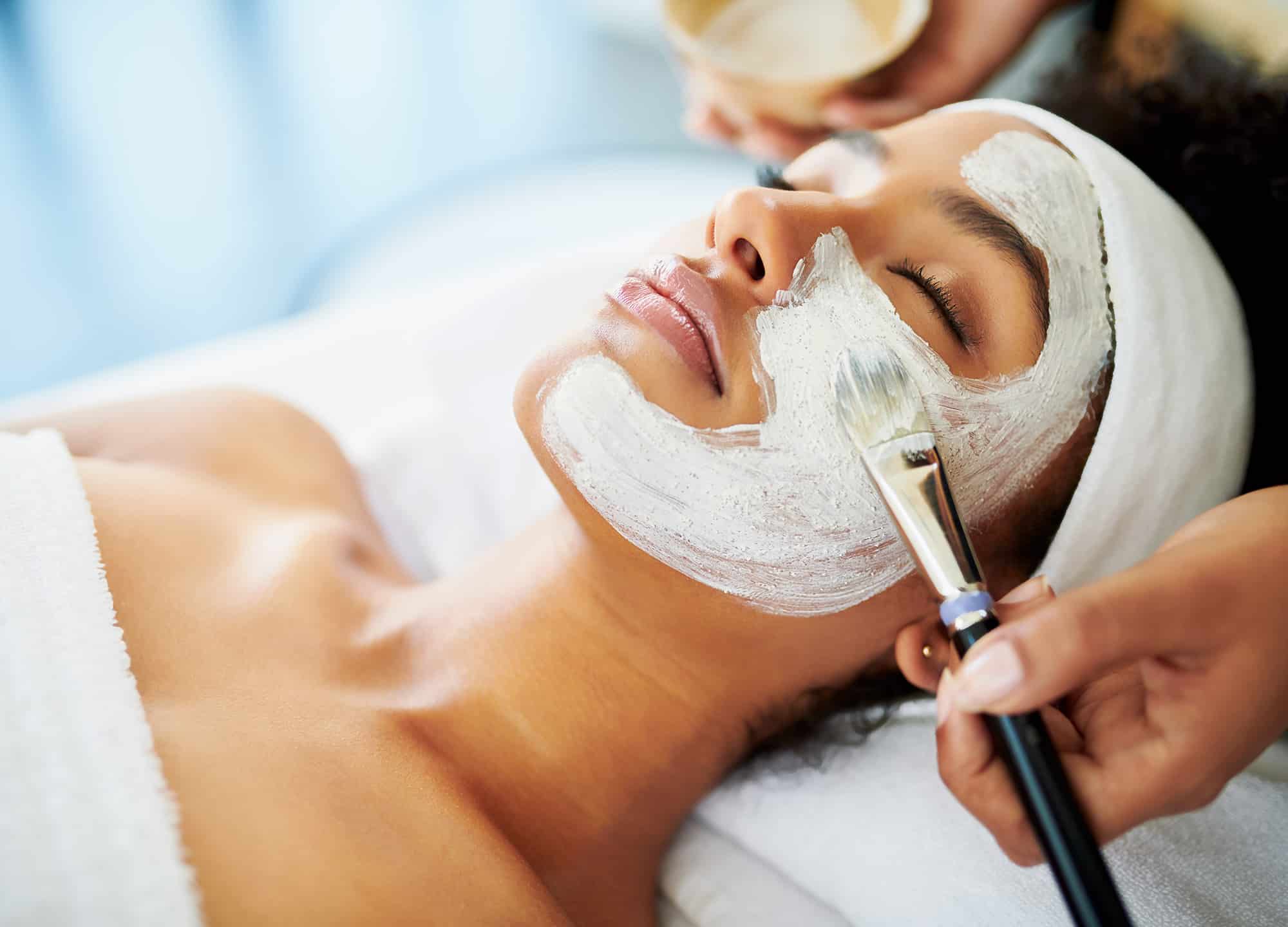Of all the complexion-boosting treatments currently available, facials are arguably the most relaxing—even with extractions. There’s just something so tranquil about having your face cleansed, moisturized, and massaged for 60 minutes as you listen to the soft hum of spa music verberating throughout the room. But the treatment isn’t just good for melting away your stress; it’s also fantastic for your skin. Giving your face all that special attention practically guarantees a post-treatment glow—unless you’re in the wrong hands.
A bad facial can do serious damage to your skin, so it’s important to be on the lookout for red flags that might indicate you’re not about to get the pampering experience you’re hoping for. We asked two experts to break down exactly what should—and should never—happen during a facial appointment.
You should be asked about your current at-home routine.
“[Your aesthetician] should always ask what products you use at home,” explains Cynthia Rivas, a licensed aesthetician in New York City. “I have seen irritation and even burns from instances where someone is using retinol or certain acids at home and when they go get a professional treatment, it’s too strong or aggressive [for their skin].” If a proper consultation is performed, an experienced facialist will pick an appropriate treatment that complements the client’s current at-home skin-care routine, to avoid overexfoliating and, ultimately, irritation.
Your skin should be thoroughly examined before the facial begins.
Once you and your facialist have talked through your personal routine and skin concerns, your face should be thoroughly inspected. “There should be a time when the facialist evaluates your skin before beginning any treatment,” says Rivas. “The evaluation should include [both] looking [at] and feeling your skin.” Yulia Gerchik, aesthetician at Daphne Studio in New York City, agrees: “[We] always begin by analyzing the client’s skin in order to prescribe the appropriate product and treatments.” This inspection is necessary to help the aesthetician understand your skin type better so they can customize the facial to your specific needs.
The aesthetician should be able to answer all your questions.
“Always look for a knowledgeable facialist,” says Rivas. “They should be able to walk you through the treatment and tell you why certain products or treatments were picked for your skin.” Aestheticians are experts in skin care, so if yours can’t answer questions regarding the facial itself, the products used, or the ingredients in them, you’re in the wrong hands.
You should not be treated by a facialist with long nails.
“It’s a big red flag if the facialist has long fingernails,” says Rivas. “Not only because of concern for being scratched, but bacteria accumulates under the nails.” If the facialist is performing multiple skin treatments a day, imagine the amount of bacteria that is picked up from every client (or just in general). This bacteria increases the client’s chance of developing new breakouts or worsening existing blemishes on the skin, so choose an aesthetician with short, clean nails.
The esthetician should wash their hands pre-treatment.
As mentioned, bacteria can wreak havoc on your skin. So before your aesthetician lays a hand on you, it’s imperative that they soap up like a surgeon scrubbing in for surgery. “The facialist should always wash their hands or use some kind of disinfectant before touching your face,” says Rivas. “Cleanliness is so important.”
You should not have extractions performed on cystic acne.
Cystic acne is much deeper and typically more severe than your run-of-the-mill breakout. It needs to be treated by a dermatologist—not you or your facialist. “Cystic acne should never be extracted [by a facialist], because [popping] it can cause scarring and make the breakouts worse by actually spreading the bacteria in your skin,” says Rivas. While it’s considered OK for your facialist to treat cystic acne with ingredients like salicylic acid or benzoyl peroxide, no squeezing, popping, or pinching should be happening.
Your skin should not look worse when you leave.
“You should always be looking better than when you came in,” says Gerchik. “A little redness or flush is normal, but the skin shouldn’t be hot, [look] inflamed, or have any signs of bleeding—especially after extractions.” Most facialists will spend time calming the skin post-extractions, so any extended irritation or bleeding after the facial has ended should be addressed immediately—even if that means seeing a dermatologist.
You should not feel excruciating pain.
Obviously, extractions aren’t typically an enjoyable experience. However, the pain you feel during this portion of the facial—or at any other time during the appointment, for that matter—shouldn’t be unbearable. If it is, you need to speak up, since it could indicate that the facialist is being too aggressive with extractions or that you’re having a reaction to one of the products being used. Plus a good aesthetician will encourage clients to speak up if they’re feeling that anything is amiss—so don’t hold back.











